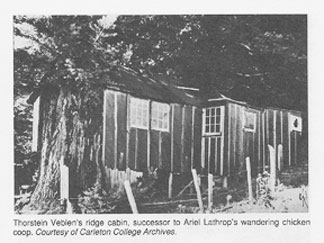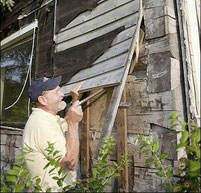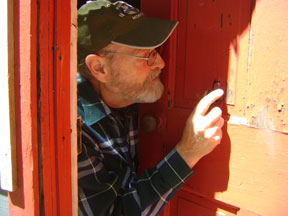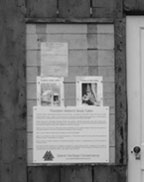Step 2: Planning the Restoration
The Original Restoration Concept
We started off with a picture from the Island which said on the back, "Veblen's Cabin at Little Lake." As we examined the image we realized the picture of a board and batten cabin we had, was not correctly labeled. Was we removed the layers of wood siding, asphalt siding and roofing shingles, the picture appeared of a board house, covered with tar paper and wooden battens. We researched at Carleton College, the archive of Veblen material. Eric Hillemann provided us with a picture that matched the Study Cabin.
The Veblen Study Cabin Picture from Carleton College, Veblen Archives

The Cabin Veblen had built while at Stanford
The two cabins on Washington Island were not the first cabin of this board, tar paper and batten design by Veblen. When he was at Stanford he build a "Chicken Coop" in the hills. Both of these photos are from the Carleton College archive.

Restoration Planning

Alan Pape
Alan Pape is a landscape architect and historical preservationist. He has located, moved and restored more than 100 pioneer structures. He was one of the original developers of Old World Wisconsin. He is nationally recognized as an expert on the restoration of Scandinavian heritage buildings.
He is currently consulting on the restoration of the Hans Hansen home in Sturgeon Bay for the Door County Historical Society.

The Analysis
Alan Pape's historical forensic skills were able to bring out an great deal of information about the Veblen Study Cabin. His careful analysis pulled back the of the layers of changes to the cabin over the 85 years since it was built.

A Restoration Plan was Developed
The first step was to separate the study cabin from the larger family cabin. There was roofing issues and wiring that had to be removed. There were timber supports under both cabins. There was a pit under the study cabin that presented a challenge.
Download a copy of the Veblen Study Cabin Restoration Plan

